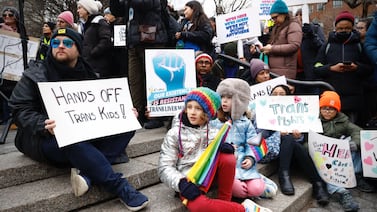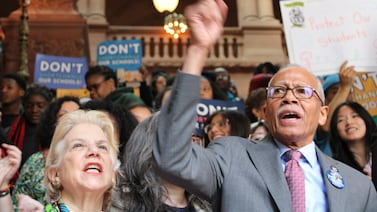Alleviating a big worry for education leaders, Indiana legislators agreed Tuesday to provide full funding to most public schools for students studying virtually in the pandemic.
The long-expected funding fix, which state political leaders widely supported, now heads to the governor’s desk. The change will shield schools from losing as much as $161 million this spring, based on estimates from the fall.
The state will fund students who attend remotely due to the coronavirus as though they were attending in person under the measure, which applies to schools that traditionally operate in person. Last fall, state officials approved a temporary measure on an emergency basis.
The Senate signed off on the final bill 44 to 4 Tuesday.
“We did what we said we were going to do,” said Sen. Jeff Raatz, an author of the bill. “It shows the General Assembly recognized the difficulties presented by COVID and the extra effort that school districts had to put forth.”
Indiana has long provided virtual schools with less funding per student because those schools are presumed to have lower costs. Since 2019, virtual schools have received 85% of the per-student allotment for in-person instruction.
But that policy ignited an avalanche of worry this year that schools that typically operate in person would precipitously lose funding. Many districts began the school year remotely because of the pandemic, and thousands of families chose virtual options.
Indiana schools receive funding based on enrollment counts in September and February. As of September, about 360,000 Indiana students were enrolled in school virtually because of COVID-19, according to data collected by the Indiana Department of Education.
It’s likely that fewer students are learning remotely this semester because several large school districts that began the year largely online have brought more students in person. Data from the February student count is not yet available. But nearly all Indiana schools now have in-person options and 90% have returned to fully in-person instruction, according to the Department of Education.
After approving a similar stopgap measure last fall, the Indiana State Board of Education left spring funding to lawmakers, who returned to session in January.
The funding increase does not cover students who were already enrolled in online programs before the pandemic, or students who are enrolled in online-only schools.
The change only applies to the 2020-21 school year, despite efforts from some Democratic lawmakers to extend it to next school year.
But virtual funding could be different for all schools next year. Amid the pandemic, online-only schools have seized the opportunity to lobby for increased funding for virtual education going forward. And they have some powerful allies — including Indiana House Republicans, who have proposed full funding for all virtual education.







